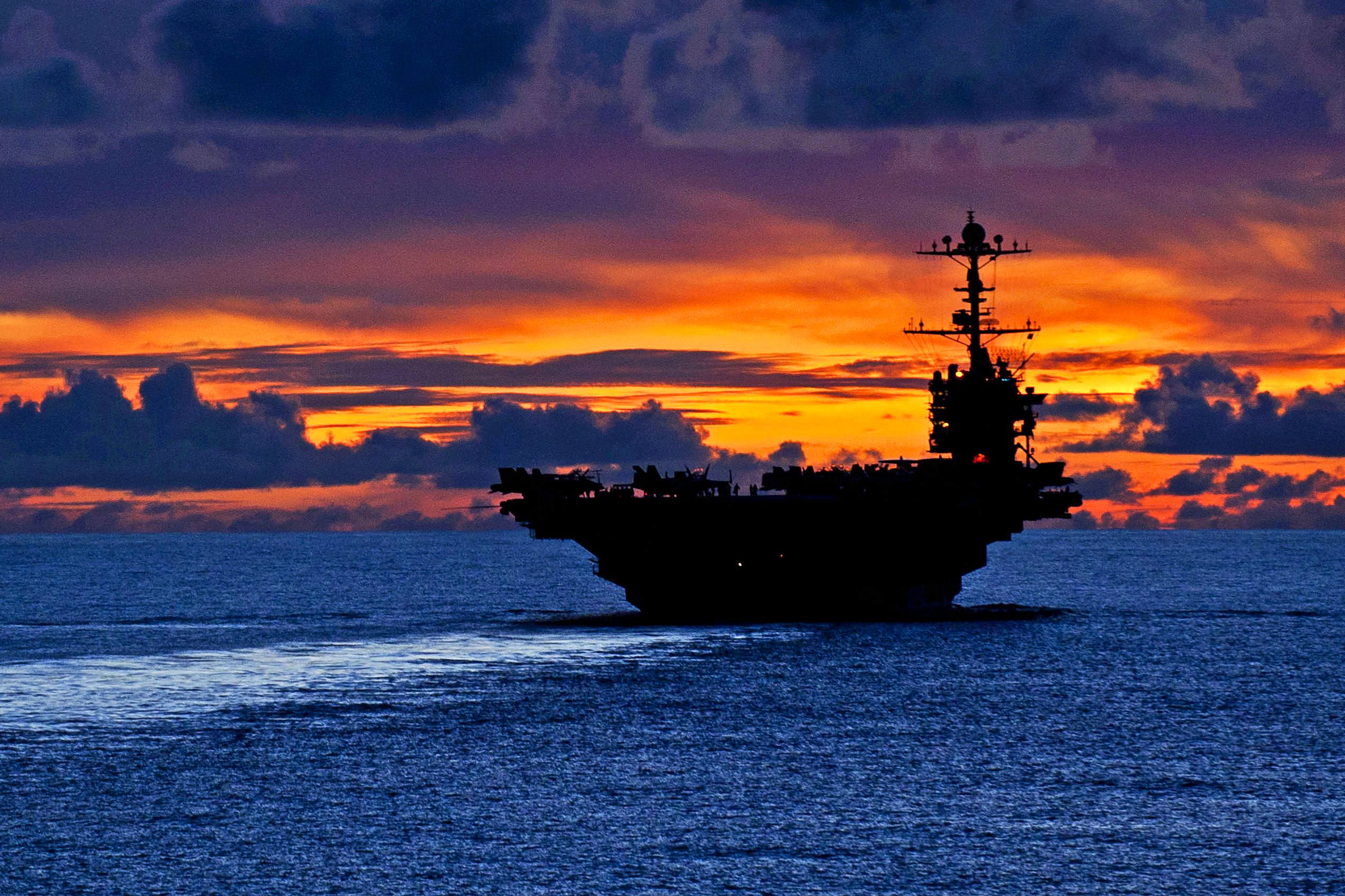Carrier Air Operations
Carrier Air Operations are the various procedures and techniques that make up landing on a moving ship, usually several miles away from any solid ground on which you can land instead. Both fixed-wing and rotary wing aircraft can make use of aircraft carriers to land on, as well as STOL / STOVL aircraft such as the Harrier and the F-35B. Because of the relatively small size (compared to a fully fledged land-based airport) of the carrier, strict procedures and rules are employed to avoid accidents (such as airplanes crashing into one another).
Contents
Carrier Basics
Before we dive headfirst into the procedures and rules associated with carrier air operations, we will first go over the various basics that come into play when operating on a carrier. These include items such as how does a carrier work, what does a carrier look like, and what sort of key features should you pay attention to when you cannot make out left from right when operating on a busy carrier.
How does an aircraft carrier work
Simply put an aircraft carrier is a floating airfield for naval aviators (pilots in the Navy and the Marine Corps) to take-off and land when doing their missions. Normally an airplane can use a fully sized runway for taking off or landing, with the size of these runways landing somewhere in the ballpark of 6000 - 12000 feet; such a size for a runway would produce an enormously long ship and would be unfeasible to have as a ship-based airfield as you would not be able to traverse rivers and canals with such a lengthy ship.
Rather than accommodate the ships length to allow for the lengthy take-off / landing area needed for conventional airplanes, all manner of studies and experiments have led to the design modification of the airplanes and the carriers instead to allow for landing and taking off from the carrier. This started all the way back to the early 1900's, though the carrier became a main staple just prior to / with the beginning of the Second World War.
Arresting gear
The fixed wing propeller planes in the Second World War had enough of a power-to-weight ratio to be able to safely take off from the carrier, but they could not slow down enough in time to safely land on the carrier. A rather simple but ingenious solution was devised: they would span a number of wires across the deck, and bolt a hook to the aircraft that could catch these wires. As soon as a landing aircraft trapped one of these arrestor wires it would slow down rapidly and be landed safely (although decelerated quite harshly). This system is still in use today (although severely upgraded) and is the method for safely putting fixed wing planes safely on the deck of the aircraft carrier (STOL/STOVL and helicopter aircraft obviously do not require the arresting wires, as they can land semi vertically on the carrier deck).
These arrestor wires are not fixed to the carrier itself (as that would put tremendous strain on the wires and the carrier), but are instead attached to a set of hydro-pneumatic systems that dispel the energy in a controlled fashion. Usually this is done by having a ram force a non-compressible fluid through a small diameter control valve, that only lets through so much fluid; this in turn slows the aircraft safely and relatively smoothly. In the early days a barrier (basically a large and strong net) was used as a backup for when an aircraft would fail to trap any wire; nowadays they are reserved for emergencies only.
Catapults
Over time the airplanes
Carrier Deck Layout
Compared to a more conventional airport, the size on a carrier deck is rather limited and as such you can expect the deck to be packed full of other airplanes and various items during normal carrier operations. This full complement of airplanes resulting in a busy deck requires good communication all-round to prevent accidents (such as crashing into one another from occuring), but there is usually some leeway in that not all aircraft parked on the deck are player-controlled aircraft. The mission editor can choose to put a number of static aircraft as objects on the deck (for display and realism purposes); although they will not be moving, they are still collideable and thus you should take care not to run into them.
Given the size constraints of the aircraft carrier deck

